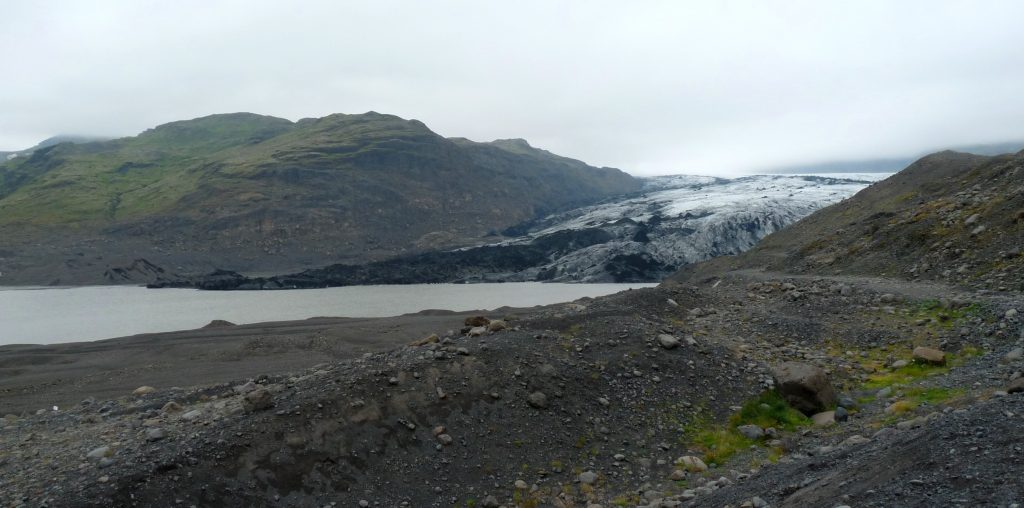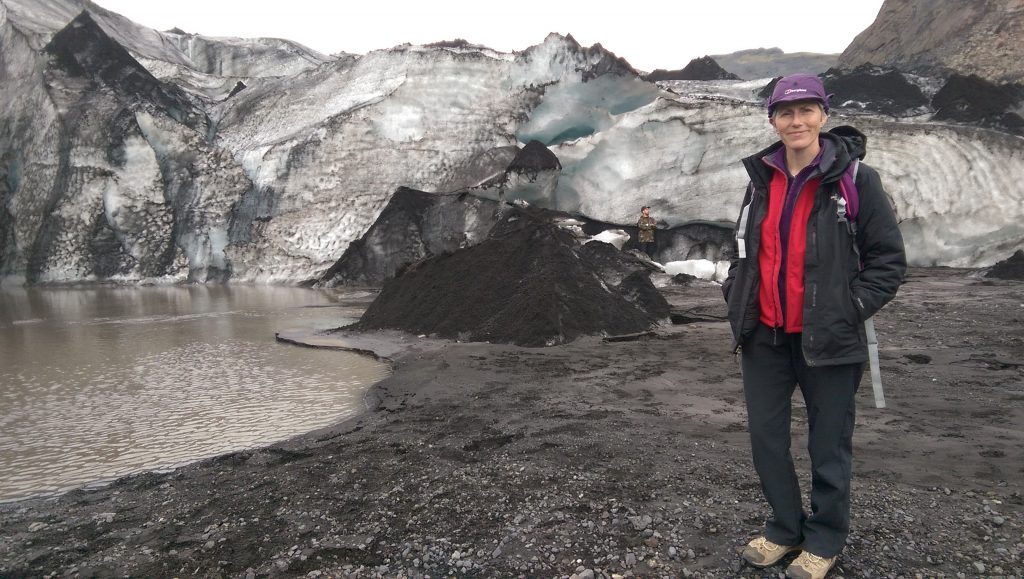Getting up close and personal with a glacier for the first time is an unforgettable experience. I first studied glacial geomorphology over 25 years ago and the strange vocabulary of the science still trips off the tongue: roches moutonnées, drumlins, ablation, calving, moraines. I have stood in the great glaciated landscapes of North Wales and Scotland and showed students the terrain carved by past glaciers – “U-shaped valleys anyone?” These all record the passage of glaciers long since gone – melted away as the British climate warmed. The landscapes that remain record the rock-grinding power of frozen water moving inexorably downhill.

Sólheimajökull glacier, Southern Iceland, June 2016. Photo F. Tweed.
But seeing an active glacier up close for the first time is astonishing. It’s all about scale, you need to stand well back to appreciate the enormity of an Icelandic glacier. From a distance, the edges are black, jumbled, craggy, only rising to a glacial whiteness higher up, away from the snout and the valley edges. Here the whiteness sometimes makes the edges hard to discern, they disappear on cloudier days high into the sky. There is no getting away from it – these things are vast.
Getting close in however, something changes in your appreciation of the aesthetics of the glacier. In my first attempt to capture the important landscape components of Iceland I had written “black, dirty ice”, a negative thing. What we want is unsullied, non-retreating (!) white ice. Black ice would work to depress the landscape quality rating, whereas white ice would raise it.

Sólheimajökull glacier, Southern Iceland, June 2016. Photo F. Tweed.
How wrong can you be? How deceptive a photograph is sometimes.
Standing with my palm on the rising front of Sólheimajökull glacier, I was completely knocked out by the beauty of the black; in the matt ash cones, the stripes of glacial blue, black and grey. It is the black which defines the craggy beauty of the crevasses, the blocks, the lines. It makes the glacial blue stripes emerging from the centre of the ice seem even more blue. The black shows clearly the business of the glacier as it gathers material and grinds it down.
Black ice = dirty ice? Well maybe from a distance, but black ice is beautiful.

R. Swetnam in front of Sólheimajökull glacier, Southern Iceland, June 2016. Photo D. Chambers.


Great blog! Stand up for our “dirty” glaciers!